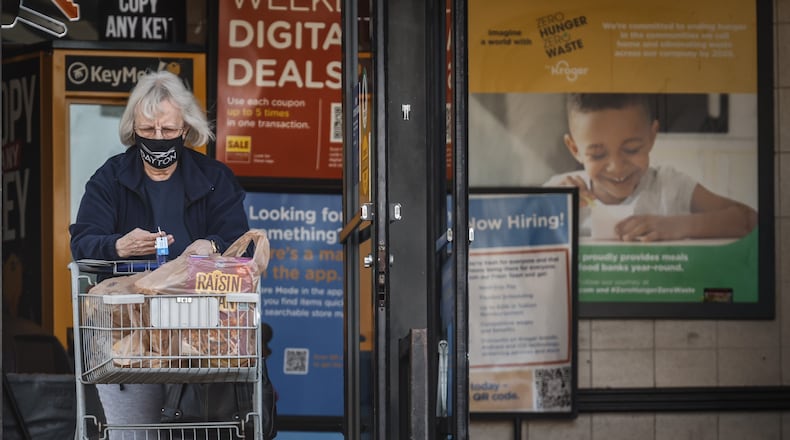More from this project:
- Social Security a vital benefit, but losing buying power for local seniors
- Food costs eclipsing historic Social Security, minimum wage increases
High inflation
U.S. inflation increased 8.2% in September, year-over-year, according to data released earlier this month by the U.S. Bureau of Labor Statistics.
Inflation across the U.S. remains very high though it eased slightly compared to August (+8.3%, year-over-year) and July (+8.5%), according to the Consumer Price Index. June’s 9.1% year-over-year increase was the largest since 1981.
Last month, inflation jumped 8.4% from one year ago in the Midwest region that includes Ohio and four other states, the bureau said. The regional inflation rate did not budge from August.
These are the average inflation rates across all items. The rates for specific things like food and energy are far higher.
Social Security
The Social Security Administration this month announced that benefit recipients next year will see the largest payment increase in more than 40 years.
The administration adjusts benefit amounts annually based on inflation.
Benefits will increase by 8.7%, or more than $140 per month on average. The average monthly benefit for retirees was about $1,681 this year.
About one in five Ohioans receive Social Security benefits, or about 2.4 million people.
This includes more than 318,000 residents in Butler, Champaign, Clark, Greene, Miami, Montgomery and Warren counties.
Food assistance
More than 1.5 million Ohioans receive food assistance, including nearly 185,000 people in the seven-county Miami Valley region, according to July data from the Ohio Department of Job and Family Services.
Two months ago, the U.S. Department of Agriculture announced that the Supplemental Nutrition Assistance Program (SNAP) would increase the maximum benefit amounts by 12.5%.
Starting this month, the program’s maximum monthly allotment will be $939 for a family of four, up from $835 in fiscal year 2022. SNAP formerly was called the food stamp program.
This is the largest annual adjustment in the program’s history, said a spokesperson for the U.S. Department of Agriculture, which oversees the program.
“Many lower-income Ohioans rely on SNAP to supplement their food budget and help provide their family with healthy, affordable meals,” said Dasia Clemente, a spokeswoman with the Ohio Department of Job and Family Services.
Minimum wage
Ohio’s minimum wage on Jan. 1 will increase to $10.10 per hour for employees who are not tipped and $5.05 per hour for those who are. Right now, tipped employees must be paid $4.65 per hour, and nontipped workers must earn $9.30.
Ohio voters in 2006 passed a constitutional amendment that requires the state to raise the minimum wage each year based on inflation.
It’s not clear exactly how many Ohio workers will benefit from the nearly 9% increase in the minimum wage, which is the largest increase since 2007, according to data from the Ohio Department of Commerce.
But about one in 10 workers in the state make less than $10.93 per hour, according to the U.S. Bureau of Statistics’ Occupational Employment and Wage Statistics from May 2021.
The state has more than 5.2 million workers, which means hundreds of thousands of people may see a pay increase.
Not enough
The cost-of-living increases are helpful but at best will just keep low-wage workers from falling further behind, said Riegel, with the Coalition on Homelessness and Housing in Ohio.
Ohio workers who earn the state’s current minimum wage would need to work 73 hours each week all year long to afford a modest, two-bedroom apartment, she said.
An Out of Reach report released earlier this year found that workers would need to earn $16.77 per hour to afford basic, two-bedroom rental units in Montgomery, Miami and Greene counties.
The cost-of-living adjustment will not make a significant difference for people working minimum-wage jobs, Riegel said.
“It’s extremely difficult to support yourself on $10.10 per hour unless you’re comfortable living in crowded conditions with multiple roommates,” she said. “It’s practically impossible to afford housing adequate to raise children earning minimum wage.”
About the Author




